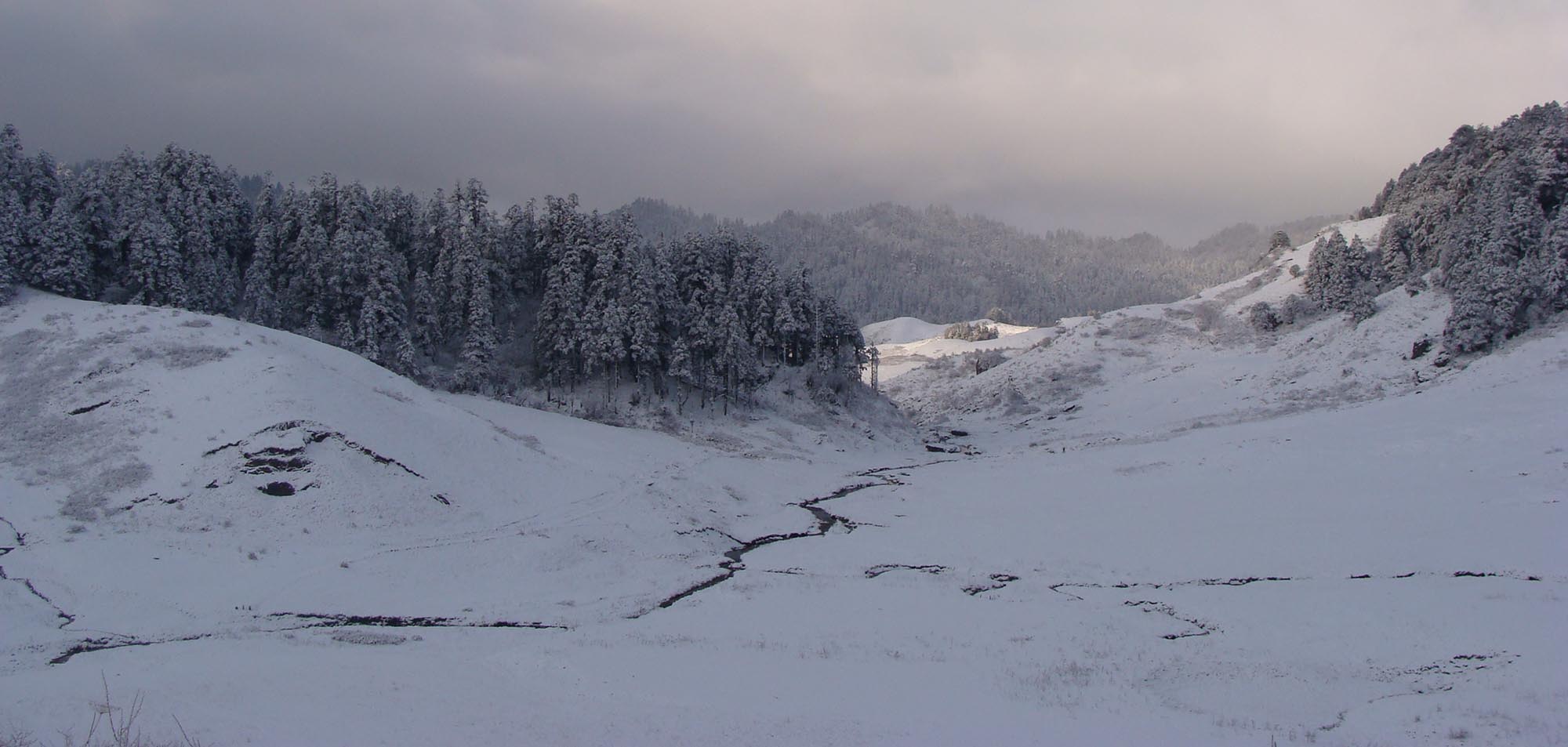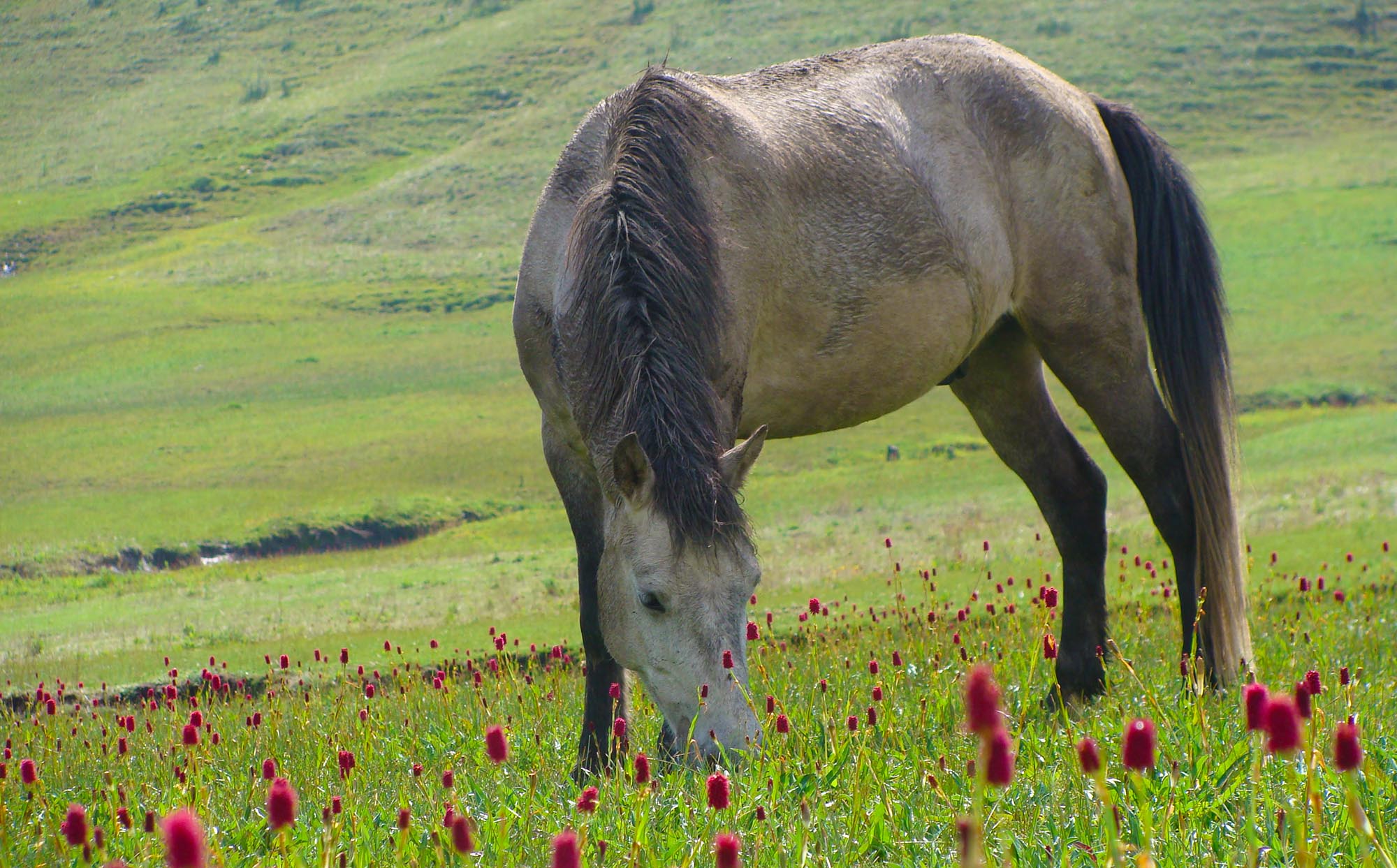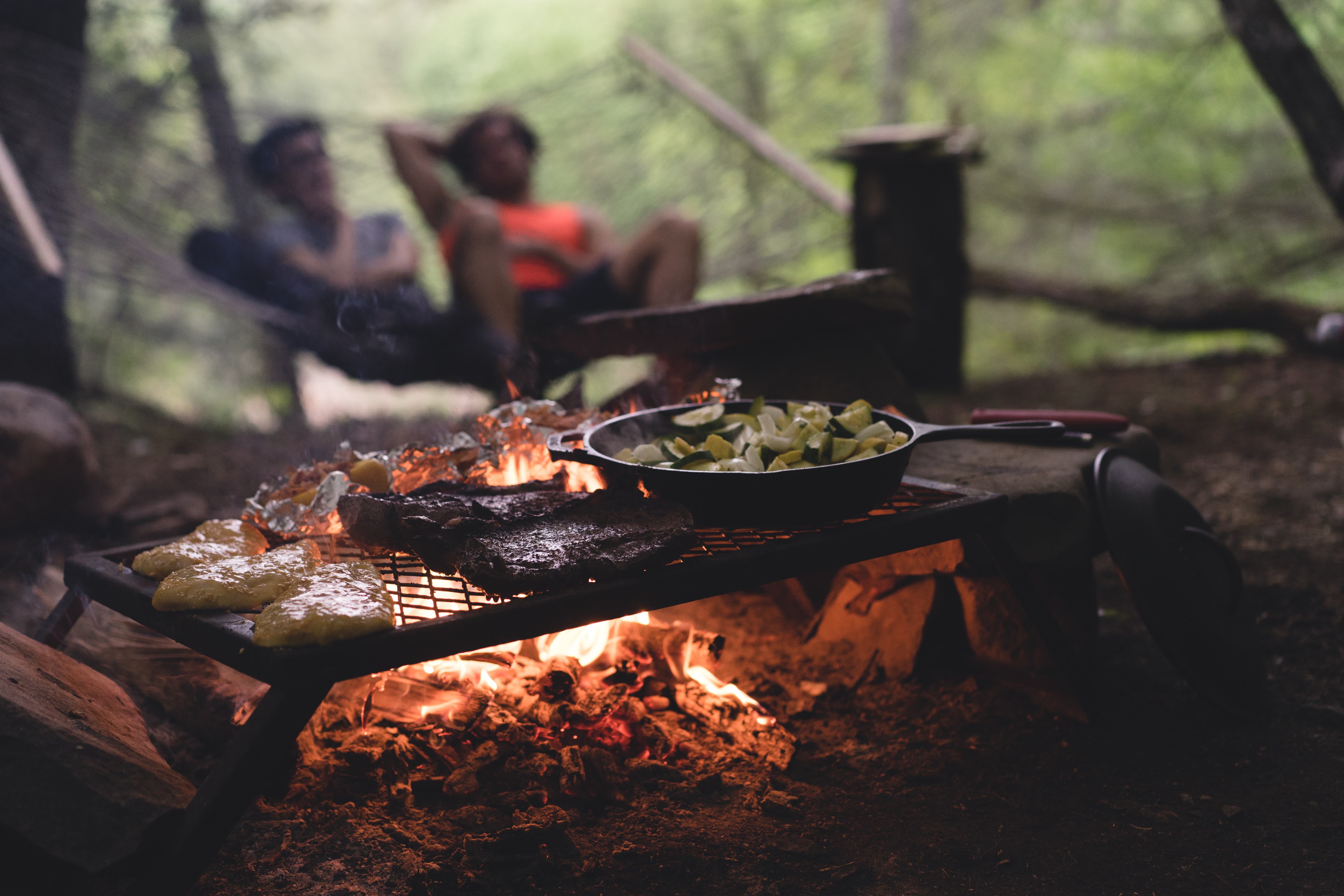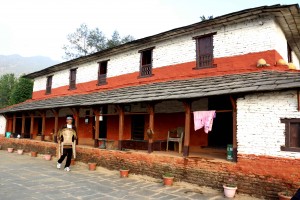The only sound was the faraway cawing of ravens. Then they flew farther away, taking all sound with them, and I was left with the immensity of a high-altitude meadow fringed with forests to gorge on. Solitude couldn’t have been deeper.
I was in Khaptad National Park, a 225 sq. km. swathe of forests interspersed with verdant meadows in Nepal’s far-western Region. Most places in the park were like that, the only notable exception being the corner where a Nepal Army barracks and national park offices sit. But even these, the only permanent human habitations in the park, were quiet save for the sputtering diesel generator that ran sometimes. All I needed to do was walk for ten minutes in any direction from these buildings, and I would be in a lonely corner of the immense wilderness.
I didn’t know how to take in silence so deep, so prolonged. If I did, I would have sat or stood in one place and let the stillness percolate into me. Instead, I walked aimlessly, stopping to examine leopard pugmarks or to listen to a brook gurgling down a meadow. I could go down to Khaptad Daha, a sacred lake, and sit for hours without seeing another person, my only company a tiny bird that hopped inches from me. I had sweeping views of mountains (and a fickle cell phone network) from a hill top mere minutes away from the barracks. I was deprived (though I never lamented it) the basic amenities that I took for granted, but Khaptad was an inexhaustible banquet for the senses.
But you need an appetite for beauty that comes from isolation. “Khaptad is fun for people like you, who come to stay for a couple of days,” one army officer told me. “After months in this place, the beauty bores you.” I couldn’t relate to his statement: he had installed satellite television to escape Khaptad’s isolation; I had come to enjoy that seclusion. In fact, part of my reason for coming to Khaptad was to see the place where one man had spent fifty years alone, meditating and writing erudite books on spirituality. That was Khaptad Baba, an ascetic who decided to “settle” in Khaptad after arriving there on his way back from a pilgrimage to Mt. Kailash.
Although Khaptad Baba had passed away long ago his hermitage was still there. I decided to spend an afternoon there, in the foolish hope that the hut would still have some magic about it. The only thing I found there was the perfect setting for sitting still, which was what I had trouble doing. I came back from the hermitage with the realisation that the true magic of a place lies in the invitation it extends to turn inwards.

What I found in Khaptad (what anyone will find) was a place whose beauty took your mind off from where you had come or where you were going. Moments were what mattered there. A stay in Khaptad is a severing of links with the outside world—even if at the most superficial of levels. And you acquaint yourself with new sights and sounds: the osprey that hovered over the meadows, the sudden burst of wings as you walked in the forest, long silences, the immense landscape of trees, clouds and blue skies.
A vast wilderness like Khaptad appeals to the equally vast wilderness within each of us, a place we rarely visit, to the point that we forget it exists. Khaptad’s serenity and tranquility is best left to photographers and poets to capture and relate. It’s ephemeral. It’s personal. You may remember Khaptad for its scenery or its wildlife or its otherworldliness. For me, it’s the place that reminded me of the sanctuary within.
Checklist
The Route to the Wild

The trek to Khaptad begins from Silgadi, in Doti district. To get there from Kathmandu you can either take one of the several daily buses to Dhangadi or Mahendranagar in Nepal far-western Region. Get off at Attariya, a settlement on the East-West Highway. Another way to get to Attariya is to take the daily flight from Dhangadi, then take a local bus to the highway. Several buses and microbuses to Silgadi depart from Attariya. From Silgadi you can take a jeep to Jhigrana, the entry point to Khaptad National Park. However, whole sections of the road are frequently washed out during monsoons, closing it for months on end. Trekking remains the best option. It takes two days to get to Khaptad from Silgadi.Over half a dozen buses leave daily from Kathmandu for Mahendranagar. The journey takes 15-18 hours. Tickets are available in Sundhara. There are also daily flights from Kathmandu to Dhangadhi. From Dhangadhi, it is an hour by road to Mahendranagar. Arrangements for transportation from the airport should be made in advance, as taxis are not always available at the airport. However, buses are available on the main road, which is two kilometers from the airport.
Public transport is almost non-existent on the road from Mahendranagar to the reserve’s entrance eight kilometers away. Hired jeeps are indispensable as jungle walks are not permitted .
While you are there

Sitapaila
You will pass by this tiny temple on your way to the army barracks. The tiny footprint etched on the floor is said to be of Sita.
Tribeni Mandir
Scenic and sacred, the Tribeni Temple is located at the confluence of two streams. A festival is held here annually, drawing hundreds of people. Bathing in the waters near this temple is believed to wash away all sins.
Sahasra Linga
This is another sacred site in Khaptad. The shrine is perched on a monolith well over three thousand meters above sea-level. Beside its religious importance, it offers some of the best views of the Saipal and Api ranges.
Khaptad Baba hermitage
Tucked in the middle of a forest, this hermitage is the ideal place for tuning in to nature and spending time sitting still. Cut away from even the amiable army men and national park staffers, this place is a little piece of the Khaptad before it came to the attention of anyone besides the local cowherds and Khaptad Baba.
Patans
If you’ve seen photos of Khaptad, chances are that they were of its famed meadows, patans in Nepali. There are twenty-two patans in Khaptad, couple of them in the vicinity of the army barracks. Ghodadauney Patan is the largest of these. Walking an extra twenty minutes northwest of Ghodadauney will get you to Naagdhunga, a rock with serpent-like formations on it.
Khaptad Daha
There is perhaps no other place as idyllic as this in Khaptad. The small lake is in the middle of a forest. There is also Khaparmandu, an old temple on the south-eastern shore. A short hike to the hill north of the lake affords enrapturing mountain views.
Places to Stay

Dhangadi has plenty of places to stay, from basic lodges to some high-end hotels. Silgadi has fewer and simpler places to stay. Jhigrana has one or two homestays. Places to stay in Khaptad are limited to the army barracks and the national park staff quarters. Unless you have made arrangements with someone in these places, you need to carry tents. There are also no places to buy food and other goods inside the national park, so carry all your provisions. Trekking alone is not recommended in what is one of Nepal’s largest wildernesses. Travel in a group, with a local guide.
***
Also read
























